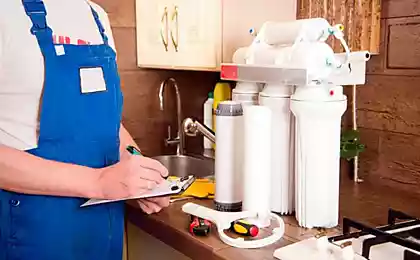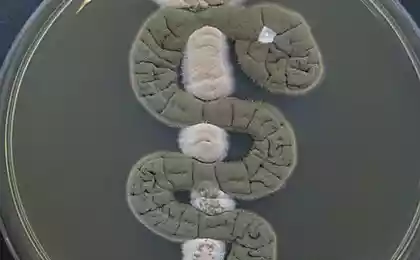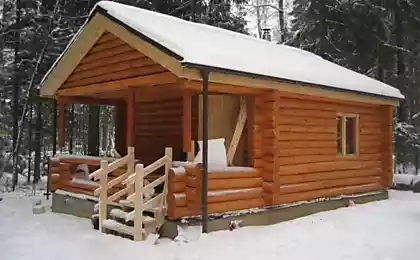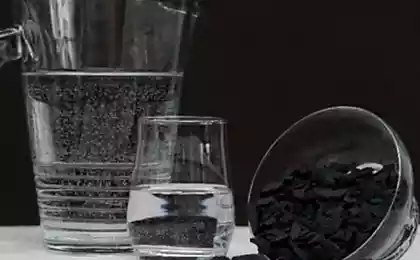602
Biotechnology of purification of water for baths and swimming pools
Currently in the Russian Federation all the urban population uses water from centralized water supply systems, that is, from the water. The average specific water consumption for drinking and domestic needs is 328 litres per person per day is higher than in most Western European countries.
The source of water supply of most cities and towns are underground water, but their share in the total volume of water consumption is less than 40%, as in most large cities water is used from surface sources. But the best is the water from artesian wells, it has higher degree of protection from contamination, but it in some cases requires pre-processing.

Good water quality in the baths and built in swimming pools is one of the indispensable conditions of preserving and strengthening the health of people using these recreation centers. Best suited tap water intended for drinking purposes, and held pre-processing. The water quality standard defined in GOST R 51232 made by the management of agricultural production, food processing, light industry and chemical industry Gosstandard Russia.
It is important that the process of taking water samples for examination was done correctly. If the goal of sampling is to assess the impact of the materials in contact with water, on water quality or evaluation of fouling materials by microorganisms, samples should be taken from the first portion of the drain water. In the technological processes of production of food products and beverages comprising one or more treatment plants, providing a number of special requirements to the water (e.g., softening), must be capable of sampling the water before and after each stage of treatment.
To prevent secondary pollution of water samples sample tap was sterilized by roasting. Sampling from the distribution network is carried out from a street hydrant devices at the main lines, the most sublime and dead-end sections and valves domestic water supply systems, hydrants. If the sample cannot be cooled, their analysis should be undertaken within 2 h after sampling.
The results of hygienic assessment of the quality of tap water of Moscow allow to make a conclusion that in General the water is suitable for use in baths and swimming pools. However, there are certain discrepancies to hygienic norms. Thus, the fluorine content is significantly below normal, the rate of permanganate value above acceptable 28%, as a result of biotesting of water (duration of survival in Daphnia water, i.e. water fleas) was two times below the norm is 48 hours instead of 96.
In the latter case, perhaps the synergistic effect on living organisms Daphnia affected by various adverse factors, toxic metals and organic compounds, the contents of each of which is out of bounds, but their cumulative impact can prove fatal. Partial confirmation of this may be an invalid value permanganate value of water (6,4 instead of 5 mg/O2/l), indicating the presence in water of significant quantities of organic substances. Modern equipment and the latest techniques allow to detect the lower concentrations of an increasing number of substances. In some cases, these indicators reach or exceed the maximum permissible values set hygienic standards.
Appearing in the media messages, in which the pursuit of sensation is higher than objective information and reasoned professional explanation of the concerns of the population. In such cases it is necessary to apply for official information and consultations to specialists in water supply. It is known that the hydrochemical composition of water has a significant impact on human health.

Insufficient concentration of the individual components in water harmful, as well as the high content of these substances. So, there is evidence of adverse impact soft water, characterized by deficiency of hardness salts (calcium content less than 30 mg/l), level of cardiovascular morbidity and condition of the bone system of the person.
It is also known that the lack of fluoride in the water contributes to the development of dental caries. An excess of fluoride is also very harmful, causes fluorosis – a disease, a symptom of which is mottling of tooth enamel. But this is only external manifestation of the disease. At the same time fluorosis causes a General disease of the organism in which there is a violation of ossification of the skeleton in children, changes in the heart muscle and the nervous system. If the pool of 30 m2 flooded with water from the Moscow water, then it is necessary to add and mix a solution of 19 grams of sodium fluoride. In this case, the concentration of fluoride in the water will be optimal.
There is a misconception that the presence of rust in water is a consequence of corrosion of steel water-bearing pipes. However, there are cases when a few hours after switching the water supply with untreated iron impurities from water treated water rust disappears, indicating that the rinsing of the tubes is fast. Therefore to blame for the rusting of underground water, not the pipe.
Iron is one of the most common elements in nature. At ordinary temperature it is quite stable substance, and when exposed to oxidizing agents, the iron is covered with loose rust. The concentration of iron howling is closely connected with the content of carbon dioxide in the sour environment solubility of iron compounds increases and in alkaline – reduced.
According to accepted sanitary standards for total iron content in tap water should not exceed 0.3 mg/l, because this is a heavy metal, and along with manganese, Nickel, chromium, arsenic, cadmium, lead and copper refers to highly toxic and persistent in nature substances. It often happens that the compound of iron in the water exceeds the norm five or even ten times or more, so the problem of iron removal of water is particularly acute.
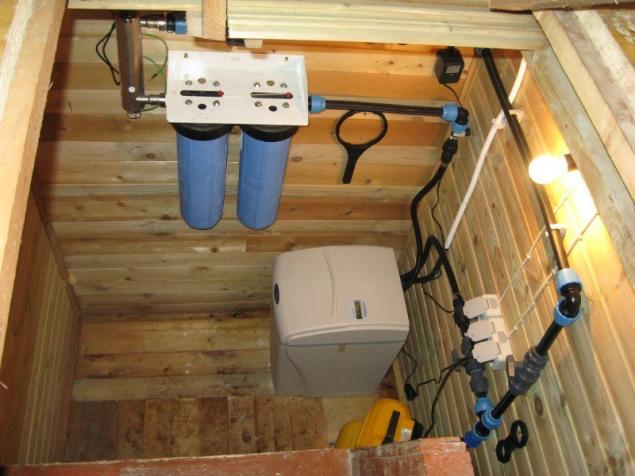
Underground waters have relatively high immunity to contamination, especially in bacteriological terms, but without special treatment and cleaning them for baths cannot be used. In one liter of river or lake water, typically contains from 0.01 to 1 mg of iron per liter — this water is clear. Swamp water a lot of iron, dozens of milligrams per liter, that's why it has a brownish rusty color. But not every iron gives the water that color. The underground water iron is usually dissolved in bivalent form, and the water is absolutely transparent. When lifting such water unpleasant odor and unpleasant taste, and when stored in air, it becomes opal-turbid, and extracted from it a brownish precipitate.
So how can we purify groundwater from iron compounds? At first glance, very simple. It is necessary to transfer iron into insoluble trivalent form and how to filter. But it is in words. In fact, the problem is very wide and due to the significant diversity of natural conditions, including the diversity composition of the groundwater and forms of iron compounds in them. Cleaning involves a number of physico-chemical processes, and is reduced primarily to the accumulation of dissolved iron compounds and their subsequent transfer to insoluble and has low solubility form. Almost all methods require pre-aeration and filtration.
One of the modern trends of non-chemical groundwater treatment is a biological method, which is based on the use of microorganisms.
The most common among them are iron bacteria. These bacteria are almost "eat" the iron, oxidizing it to "rusty" trivalent form. By themselves, these bacteria are not dangerous for the human body, but their metabolic products carcinogenic. Long iron bacteria was the enemy and the Bane of water systems. For example, in conditions of low water flow through the six months of operation of the aqueduct on the inner pipe surface to form iron bacteria fouling in the form of bumps with a height of 10 mm. was under such mounds begins with the destruction of the pipe material, and with longer lasting formed fistula. In the future, the formation of hillocks on the walls of water pipes leads to clogging of the entire inner surface, which is accompanied by a loss of water pressure.
Intensive boonratana associated with bacteria also occur in heat exchangers of heating systems; even the relatively thin layer of fouling greatly reduces the efficiency of the system. In the deposits formed by iron bacteria find favorable conditions for life and other bacteria, including Escherichia coli, putrefactive bacteria and various worms and others. Thus, there is a secondary water pollution by waste products and decomposition of these organisms, which in turn leads to a substantial increase in water concentrations of iron.
It is now established more than twenty types of iron bacteria that are widely distributed in various parts of our country. Liquidation of consequences zhelezobaktery fouling is a time – consuming and not always sufficient undertaking, requiring considerable material cost.
To turn an enemy into a faithful helper helped modern innovative approaches to water purification. modern biotechnology is based on the properties of the catalytic film formed on the sand-and-gravel load, and also on the ability of the iron bacteria to provide for a complex chemical process without any cost of energy and the use of reagents.
These processes are natural and "designed" by nature. abundant growth of iron bacteria observed in water with iron content of from 10 to 30 mg/l, however, experience shows that their development is possible even when the concentration of iron a hundred times smaller. The only condition is to maintain the acidity at a low level while oxygen from the air, even in very small amounts.
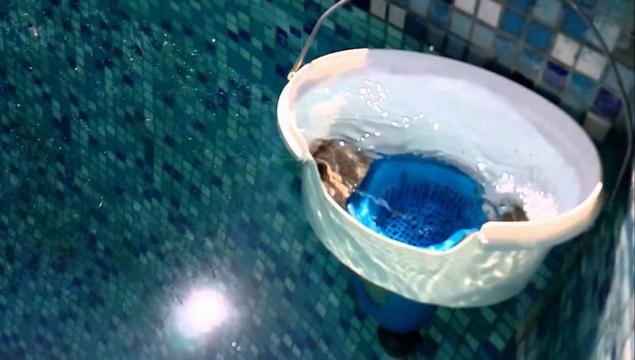
In some cases, bioremediation is the only feasible way of bringing water to the normal consumer state. So, in the far East and Western Siberia almost all operated wells have high iron content (up to 50 mg/l), and sometimes it is trudnoreshaemyh organic complexes. As a rule, the underground water is high (up to 300 mg/l) the concentration of carbon dioxide and hydrogen sulfide, which indicates the higher its acidity. in this case, it is impossible to apply ordinary methods of iron removal of water (with a simplified aeration), require more effective methods associated with the special cultivation of iron bacteria on sand and gravel base.
It is important to note that the application of biotechnology for water purification does not require a training or high qualifications of the staff.
The most suitable method of deferrization of water for use in baths and basins at the present time – vacuum-ejection, includes the filtration of water through the colony of iron bacteria in slow filters with sand and gravel loading. The final stage is the sorption purification for containment of waste products and bacteria in the final water disinfection germicidal rays. published
P. S. And remember, only by changing their consumption — together we change the world! ©
Source: pools.ua/company/articles/custom-pool.html
The source of water supply of most cities and towns are underground water, but their share in the total volume of water consumption is less than 40%, as in most large cities water is used from surface sources. But the best is the water from artesian wells, it has higher degree of protection from contamination, but it in some cases requires pre-processing.

Good water quality in the baths and built in swimming pools is one of the indispensable conditions of preserving and strengthening the health of people using these recreation centers. Best suited tap water intended for drinking purposes, and held pre-processing. The water quality standard defined in GOST R 51232 made by the management of agricultural production, food processing, light industry and chemical industry Gosstandard Russia.
It is important that the process of taking water samples for examination was done correctly. If the goal of sampling is to assess the impact of the materials in contact with water, on water quality or evaluation of fouling materials by microorganisms, samples should be taken from the first portion of the drain water. In the technological processes of production of food products and beverages comprising one or more treatment plants, providing a number of special requirements to the water (e.g., softening), must be capable of sampling the water before and after each stage of treatment.
To prevent secondary pollution of water samples sample tap was sterilized by roasting. Sampling from the distribution network is carried out from a street hydrant devices at the main lines, the most sublime and dead-end sections and valves domestic water supply systems, hydrants. If the sample cannot be cooled, their analysis should be undertaken within 2 h after sampling.
The results of hygienic assessment of the quality of tap water of Moscow allow to make a conclusion that in General the water is suitable for use in baths and swimming pools. However, there are certain discrepancies to hygienic norms. Thus, the fluorine content is significantly below normal, the rate of permanganate value above acceptable 28%, as a result of biotesting of water (duration of survival in Daphnia water, i.e. water fleas) was two times below the norm is 48 hours instead of 96.
In the latter case, perhaps the synergistic effect on living organisms Daphnia affected by various adverse factors, toxic metals and organic compounds, the contents of each of which is out of bounds, but their cumulative impact can prove fatal. Partial confirmation of this may be an invalid value permanganate value of water (6,4 instead of 5 mg/O2/l), indicating the presence in water of significant quantities of organic substances. Modern equipment and the latest techniques allow to detect the lower concentrations of an increasing number of substances. In some cases, these indicators reach or exceed the maximum permissible values set hygienic standards.
Appearing in the media messages, in which the pursuit of sensation is higher than objective information and reasoned professional explanation of the concerns of the population. In such cases it is necessary to apply for official information and consultations to specialists in water supply. It is known that the hydrochemical composition of water has a significant impact on human health.

Insufficient concentration of the individual components in water harmful, as well as the high content of these substances. So, there is evidence of adverse impact soft water, characterized by deficiency of hardness salts (calcium content less than 30 mg/l), level of cardiovascular morbidity and condition of the bone system of the person.
It is also known that the lack of fluoride in the water contributes to the development of dental caries. An excess of fluoride is also very harmful, causes fluorosis – a disease, a symptom of which is mottling of tooth enamel. But this is only external manifestation of the disease. At the same time fluorosis causes a General disease of the organism in which there is a violation of ossification of the skeleton in children, changes in the heart muscle and the nervous system. If the pool of 30 m2 flooded with water from the Moscow water, then it is necessary to add and mix a solution of 19 grams of sodium fluoride. In this case, the concentration of fluoride in the water will be optimal.
There is a misconception that the presence of rust in water is a consequence of corrosion of steel water-bearing pipes. However, there are cases when a few hours after switching the water supply with untreated iron impurities from water treated water rust disappears, indicating that the rinsing of the tubes is fast. Therefore to blame for the rusting of underground water, not the pipe.
Iron is one of the most common elements in nature. At ordinary temperature it is quite stable substance, and when exposed to oxidizing agents, the iron is covered with loose rust. The concentration of iron howling is closely connected with the content of carbon dioxide in the sour environment solubility of iron compounds increases and in alkaline – reduced.
According to accepted sanitary standards for total iron content in tap water should not exceed 0.3 mg/l, because this is a heavy metal, and along with manganese, Nickel, chromium, arsenic, cadmium, lead and copper refers to highly toxic and persistent in nature substances. It often happens that the compound of iron in the water exceeds the norm five or even ten times or more, so the problem of iron removal of water is particularly acute.

Underground waters have relatively high immunity to contamination, especially in bacteriological terms, but without special treatment and cleaning them for baths cannot be used. In one liter of river or lake water, typically contains from 0.01 to 1 mg of iron per liter — this water is clear. Swamp water a lot of iron, dozens of milligrams per liter, that's why it has a brownish rusty color. But not every iron gives the water that color. The underground water iron is usually dissolved in bivalent form, and the water is absolutely transparent. When lifting such water unpleasant odor and unpleasant taste, and when stored in air, it becomes opal-turbid, and extracted from it a brownish precipitate.
So how can we purify groundwater from iron compounds? At first glance, very simple. It is necessary to transfer iron into insoluble trivalent form and how to filter. But it is in words. In fact, the problem is very wide and due to the significant diversity of natural conditions, including the diversity composition of the groundwater and forms of iron compounds in them. Cleaning involves a number of physico-chemical processes, and is reduced primarily to the accumulation of dissolved iron compounds and their subsequent transfer to insoluble and has low solubility form. Almost all methods require pre-aeration and filtration.
One of the modern trends of non-chemical groundwater treatment is a biological method, which is based on the use of microorganisms.
The most common among them are iron bacteria. These bacteria are almost "eat" the iron, oxidizing it to "rusty" trivalent form. By themselves, these bacteria are not dangerous for the human body, but their metabolic products carcinogenic. Long iron bacteria was the enemy and the Bane of water systems. For example, in conditions of low water flow through the six months of operation of the aqueduct on the inner pipe surface to form iron bacteria fouling in the form of bumps with a height of 10 mm. was under such mounds begins with the destruction of the pipe material, and with longer lasting formed fistula. In the future, the formation of hillocks on the walls of water pipes leads to clogging of the entire inner surface, which is accompanied by a loss of water pressure.
Intensive boonratana associated with bacteria also occur in heat exchangers of heating systems; even the relatively thin layer of fouling greatly reduces the efficiency of the system. In the deposits formed by iron bacteria find favorable conditions for life and other bacteria, including Escherichia coli, putrefactive bacteria and various worms and others. Thus, there is a secondary water pollution by waste products and decomposition of these organisms, which in turn leads to a substantial increase in water concentrations of iron.
It is now established more than twenty types of iron bacteria that are widely distributed in various parts of our country. Liquidation of consequences zhelezobaktery fouling is a time – consuming and not always sufficient undertaking, requiring considerable material cost.
To turn an enemy into a faithful helper helped modern innovative approaches to water purification. modern biotechnology is based on the properties of the catalytic film formed on the sand-and-gravel load, and also on the ability of the iron bacteria to provide for a complex chemical process without any cost of energy and the use of reagents.
These processes are natural and "designed" by nature. abundant growth of iron bacteria observed in water with iron content of from 10 to 30 mg/l, however, experience shows that their development is possible even when the concentration of iron a hundred times smaller. The only condition is to maintain the acidity at a low level while oxygen from the air, even in very small amounts.

In some cases, bioremediation is the only feasible way of bringing water to the normal consumer state. So, in the far East and Western Siberia almost all operated wells have high iron content (up to 50 mg/l), and sometimes it is trudnoreshaemyh organic complexes. As a rule, the underground water is high (up to 300 mg/l) the concentration of carbon dioxide and hydrogen sulfide, which indicates the higher its acidity. in this case, it is impossible to apply ordinary methods of iron removal of water (with a simplified aeration), require more effective methods associated with the special cultivation of iron bacteria on sand and gravel base.
It is important to note that the application of biotechnology for water purification does not require a training or high qualifications of the staff.
The most suitable method of deferrization of water for use in baths and basins at the present time – vacuum-ejection, includes the filtration of water through the colony of iron bacteria in slow filters with sand and gravel loading. The final stage is the sorption purification for containment of waste products and bacteria in the final water disinfection germicidal rays. published
P. S. And remember, only by changing their consumption — together we change the world! ©
Source: pools.ua/company/articles/custom-pool.html
Detox in 30 days: the best drinks, body cleansing
It is necessary to know! Factors that Deplete your body
